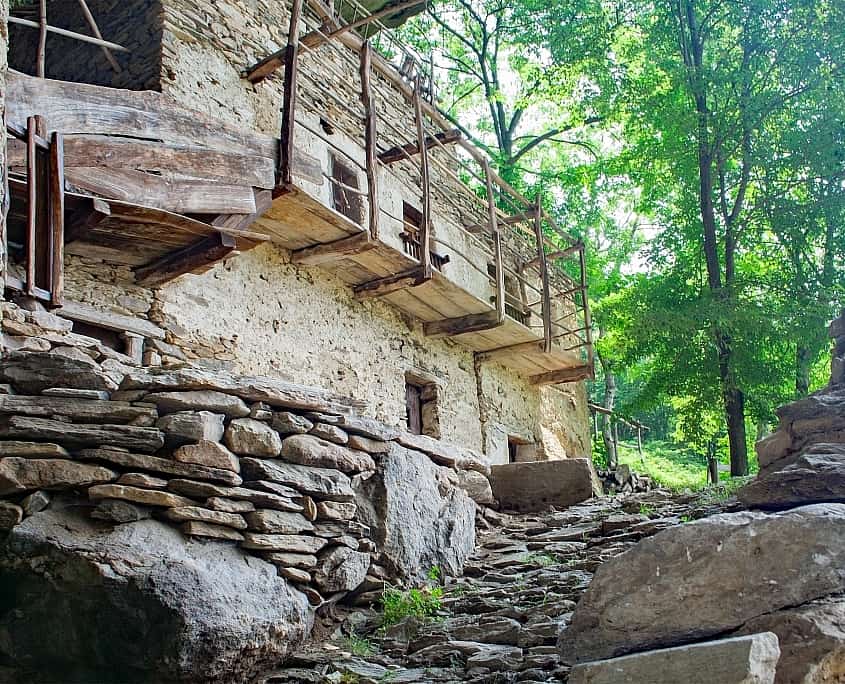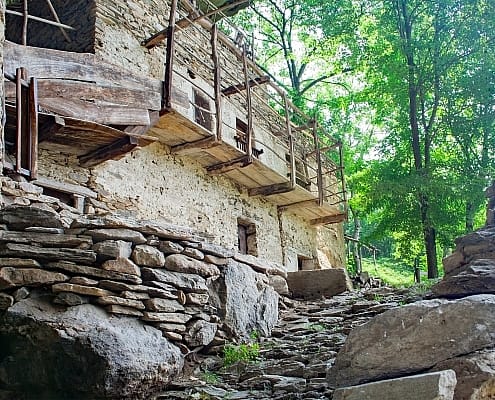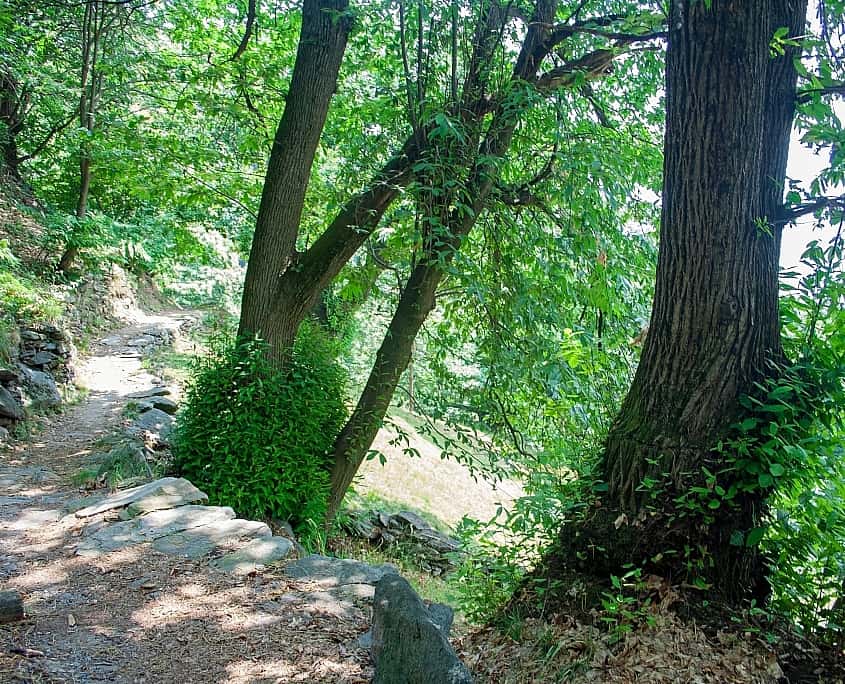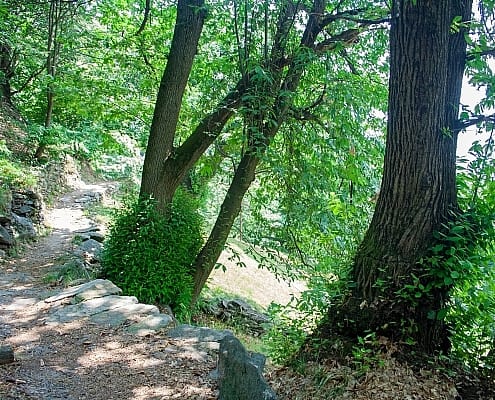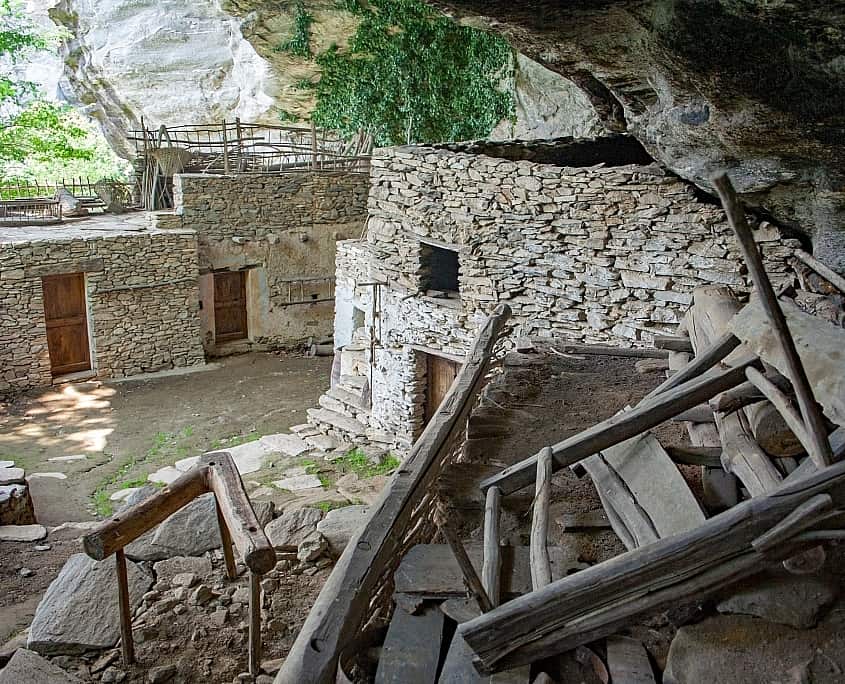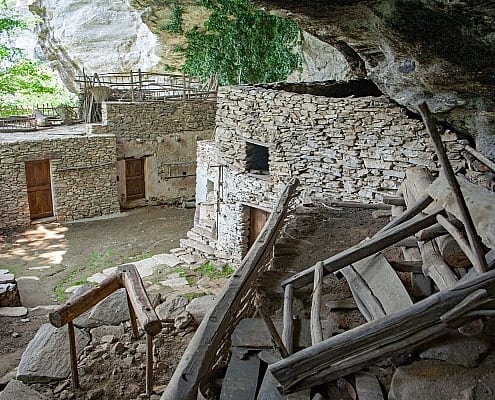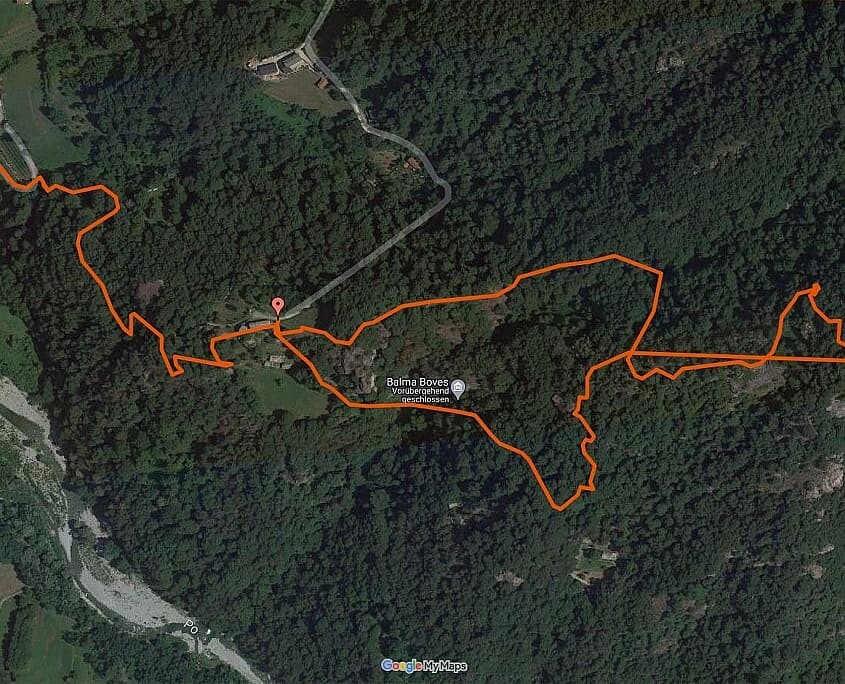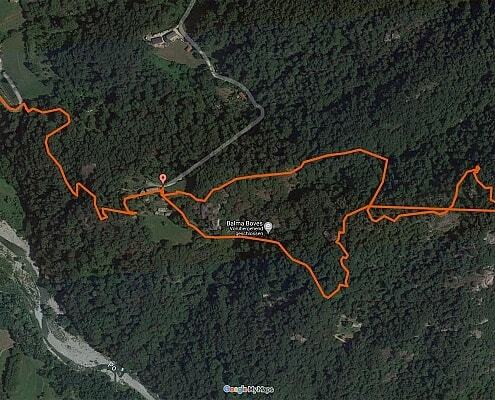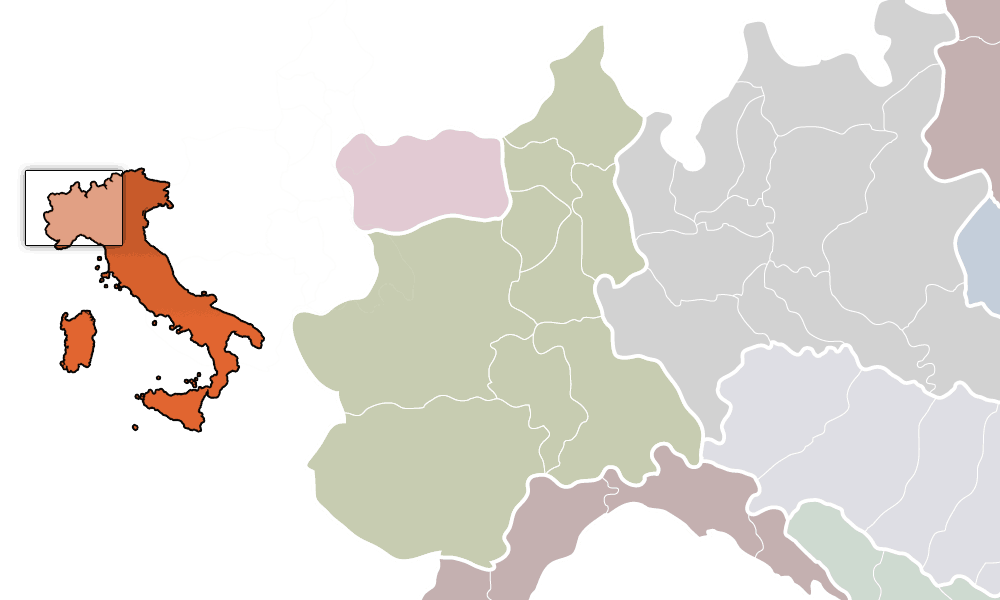On the slope of the Mombracco, three families lived under a rocky outcrop in the historic stone settlement of Balma Boves. Today the settlement is an open-air museum on Mombracco, the mountain of Leonardo, near Sanfront in the valley of the Po.
In the lower valley of the river Po near Sanfront, the Mombracco rises to an altitude of 1250m. Leonardo da Vinci was already enthusiastic about the Monte Bracco and appreciated the quartzite, which was then exported to America. The Mombracco is also famous for the settlement Balma Boves, which are small stone houses that were built under overhanging rocks. The houses are built of stone like mountain houses, balconies and stairs were built from wood.
Balma Boves at Mombracco, Leonardo da Vinci’s Favorite Mountain
History of the stone settlement
The name Balma Boves comes from the Celtic and means shelter under the rock. Even in ancient times, people sought protection under a huge ledge. So they built their stone houses on the mountain slope of the Mombracco at a height of 750 – 800 m.
Until the 1950s, that is until motorized vehicles conquered the country, the settlement of Balma Boves was inhabited and the residents were able to take care of themselves autonomously. After that, the hassle of ascending on foot was no longer worthwhile and the people left the stone apartments.
The settlement of Balma Boves is very well preserved and has been expanded into an open-air museum.
Life in Balma Boves
Three families lived under the rock of Balma Boves, and each of them had a room with sparse furnishings. This included a bed with a mattress filled with leaves, a table, a chest, a stool and a baking trough as well as a stable with a cow, goat and donkey. In winter this was the warmest room and the whole family life and also the work was done in the room. In the evening you sat together by candlelight and slept in the stable. The children were also born in the stable. There was also a kind of cellar where milk was made into butter and cheese and wine was stored. In a drying room, chestnuts were dried or smoked over wooden grids so that they could later be used to grind flour. This room was also used as a kitchen because it was the only one where open fires could be lit.
All three families shared the source and water of the cascade. An common oven was used by each family according to a schedule. There was also a small chicken coop and a dog house in the settlement. People worked wood, stored hay as animal feed and beat grain. The children also had a place to play. Each family had three properties that were indispensable: a piece of forest with chestnut trees, pastureland, and a field where fruit trees and wine were grown. Donkeys and wooden sledges served as means of transport.
Visits and Tours
The visit of the Balma Boves can be integrated in a hiking tour organized by milano24ore. If you plan on visiting the Cliff Dwellings of Balma Boves with a group, we can organize the tour with a guide in your language.
Opening Hours
The outdoor area of the open-air museum can be visited in all seasons. The inside of the houses can only be viewed during a guided tour during opening hours:
- On Sundays and public holidays from early April to late October
- From mid-June to mid-September, it is also open every Saturday
- April – September: 10:00 a.m. – 6:30 p.m.
- October: 10:00 a.m. – 5:00 p.m.
Prices (2020)
Adults: € 4
Discounts for children and groups
Hiking around Balma Boves
The circular walk to the Balma Boves open-air museum takes about 1 hour. The hike to the Balma Boves begins in Sanfront. The tour can be integrated in a hiking tour organized by milano24ore. If you plan on visiting the Cliff Dwellings of Balma Boves with a group, we can organize the tour with a guide in your language.
The short hike is also a journey into the past. Rock inscriptions probably date from the Copper and Bronze Ages.
Through chestnut forests, the V1 trail goes around Monte Bracco and reaches a panoramic point with characteristic smooth rocky outcrops. On the way there, it is best to keep left at the fork and walk the piece above the stone settlement to the viewpoint and visit the settlement of Balma Boves on the way back.
- Distance: 3.0 km
- Minimum altitude: 535 m
- Maximum altitude: 861 m
- Total climb: 326 m
- Total descend: 204 m




